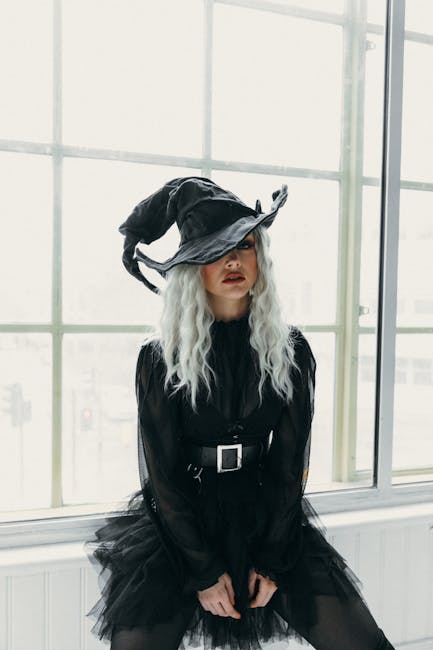The Unparalleled Power of User-Generated Content (UGC) on TikTok
User-Generated Content (UGC) stands as a foundational pillar in the realm of modern digital marketing, particularly within the dynamic ecosystem of TikTok. Far more than mere testimonials or casual mentions, UGC encapsulates any form of content – videos, images, reviews, posts – that has been created by individual users, rather than by brands themselves. This organic, authentic content resonates profoundly with audiences because it emanates from real people, sharing real experiences, devoid of the polished, often perceived as inauthentic, sheen of traditional advertising. On a platform like TikTok, where authenticity is the reigning currency and community engagement is paramount, UGC isn’t just an advantage; it’s a strategic imperative for brands aiming for high-performing ad campaigns.
The psychological underpinnings of UGC’s effectiveness are multifaceted. At its core, UGC leverages the principle of social proof, a phenomenon where people assume the actions of others in an attempt to reflect correct behavior for a given situation. When consumers see their peers, people they can relate to, genuinely using and endorsing a product or service, it builds an immediate bridge of trust that traditional brand-created ads struggle to erect. This relatability fosters a sense of authenticity, which is critical in an era where consumers are increasingly wary of overt marketing messages. The content feels less like an advertisement and more like a sincere recommendation from a friend, significantly lowering the consumer’s guard and increasing receptivity. Moreover, UGC often showcases products in real-world scenarios, addressing genuine pain points or demonstrating practical benefits, which can be far more convincing than idealized studio shots. It’s a direct response to the modern consumer’s desire for transparency and genuine connection, transforming passive viewers into engaged, trusting prospects.
TikTok: The Quintessential Environment for UGC Flourishment
TikTok’s architectural design and inherent user behaviors make it an unparalleled crucible for UGC to thrive and amplify. The platform’s algorithm, a sophisticated engine of discovery, inherently prioritizes content that is engaging, native, and performs well within its vast, ever-shifting trend landscape. Unlike more traditional social media platforms that historically favored curated, professional content, TikTok champions raw, unfiltered creativity. This preference means that authentic UGC, even if unpolished, often outperforms meticulously produced brand advertisements simply because it aligns seamlessly with the platform’s organic aesthetic and user expectations.
The very essence of TikTok is creator-driven. Its immense popularity is built on the backs of millions of individual users sharing their daily lives, creative expressions, and unique perspectives. This fosters a culture where content from peers is not only accepted but actively sought out and celebrated. Trends, challenges, and trending sounds – the lifeblood of TikTok – are inherently UGC-driven. Users participate by creating their own versions, sharing their interpretations, and adding to a collective narrative. For brands, this represents an extraordinary opportunity: rather than merely pushing products, they can tap into existing conversational currents, becoming part of the community through the content their users are already generating. The short-form video format further enhances UGC’s appeal, allowing for quick, digestible, and highly shareable bursts of authentic content that capture attention rapidly and efficiently, a crucial advantage in the fast-paced TikTok feed. Furthermore, TikTok’s demographic composition, heavily skewed towards younger audiences who are digital natives, means there is an inherent skepticism towards traditional advertising and a strong preference for genuine, peer-to-peer recommendations. This makes UGC not just effective, but often indispensable for reaching and influencing this critical segment. The virality potential on TikTok, driven by its unique algorithm and shared sounds/trends, means a single piece of UGC can achieve exponential reach, far beyond what traditional paid media alone might accomplish.
Diverse Forms of UGC Driving TikTok Ad Performance
The versatility of User-Generated Content on TikTok is one of its most compelling attributes for advertisers. Different types of UGC serve distinct purposes and resonate with audiences in varied ways, offering a rich palette for strategic campaign deployment. Understanding these forms allows brands to curate content that best aligns with their specific marketing objectives and target audience segments.
Product Reviews and Unboxings: These are arguably the most direct and impactful forms of UGC. A user showcasing a product, detailing its features, benefits, and overall experience, provides a tangible demonstration that builds immediate credibility. Unboxing videos, in particular, capitalize on the excitement of discovery and reveal the product in its true form, often highlighting packaging and initial impressions. The raw, unscripted nature of these videos makes them feel trustworthy, addressing potential customer skepticism head-on. They serve as compelling social proof, answering questions that potential buyers might have about the product’s appearance, functionality, and value, often leading directly to conversion.
“How-To” or Demonstration Videos: Beyond simply showing a product, these videos illustrate how to use it effectively or creatively. For complex products, software, or beauty tools, a user demonstrating step-by-step usage can clarify functionality, alleviate concerns about difficulty, and inspire new applications. This form of UGC is invaluable for educating the audience, showcasing the practical utility of a product, and highlighting unique selling propositions in a highly digestible format. It transforms a product from an abstract concept into a tangible solution.
Testimonials and Endorsements: While similar to reviews, testimonials often focus more on the emotional or transformative impact of a product or service. These are direct endorsements where users share their positive experiences, emphasizing the benefits they’ve reaped. They can range from a quick, enthusiastic verbal endorsement to a more detailed narrative of how the product solved a problem or improved their life. Their power lies in the emotional connection they forge, making the benefits feel personal and attainable for the viewer.
Before-and-After Transformations: Visually compelling and highly shareable, before-and-after UGC is particularly potent for products promising noticeable change, such as skincare, fitness, home improvement, or fashion. These videos dramatically illustrate the product’s effectiveness, providing undeniable visual proof of its impact. The stark contrast between the “before” and “after” captures attention instantly and makes the product’s value proposition undeniably clear and aspirational.
Challenge Participations: TikTok thrives on challenges. Brands can leverage this by creating or sponsoring challenges that encourage users to incorporate their product or brand message in a creative, often entertaining, way. The resulting UGC is not only authentic but also highly viral, as users participate, share, and inspire others to join. This type of UGC boosts brand awareness, fosters community engagement, and can even generate massive earned media as content spreads organically.
Trend Adoptions: Astute brands will monitor trending sounds, filters, and formats on TikTok and encourage users to integrate their products into these popular trends. This makes the brand feel current, relevant, and part of the cultural zeitgeist. When a product appears seamlessly within a trending video, it feels less like an advertisement and more like a natural part of the content users are already consuming and enjoying, enhancing discoverability and brand affinity.
Behind-the-Scenes/Lifestyle Content: This form of UGC shows products being used in everyday life, often subtly integrated into a user’s routine or environment. It can be a glimpse into someone’s morning routine featuring a specific coffee maker, or a casual outfit-of-the-day video highlighting a piece of apparel. This type of content humanizes the brand, showing how the product fits into a real, relatable lifestyle, rather than being presented in an idealized, isolated setting. It evokes aspiration and normalcy simultaneously.
Duets and Stitches: These TikTok features allow users to react to, respond to, or build upon existing content. Brands can create initial content and encourage users to duet or stitch with it, turning passive viewers into active participants and content creators. This amplifies reach, fosters interaction, and generates a dynamic stream of reactive UGC that demonstrates engagement and discussion around the brand or product.
Each of these UGC types offers unique advantages for TikTok advertising. By strategically diversifying the forms of UGC utilized in campaigns, brands can create a comprehensive, multi-faceted approach that resonates with various segments of their audience, addresses different stages of the customer journey, and ultimately drives superior ad performance. The key is understanding which type of UGC best communicates a particular message or achieves a specific objective, and then actively encouraging and curating that content.
Strategic Sourcing and Cultivating UGC for TikTok Ads
The genesis of high-performing TikTok ad campaigns powered by User-Generated Content lies not just in recognizing its value, but in a systematic approach to finding, encouraging, and legally utilizing this invaluable asset. Sourcing UGC is a multi-pronged endeavor, requiring both passive observation and active cultivation strategies to build a robust library of authentic content.
1. Organic Collection through Monitoring:
The most straightforward method begins with vigilant social listening. Brands must actively monitor mentions, hashtags, and brand tags across TikTok. Users naturally create content featuring products they love, services they appreciate, or experiences they’ve had with a brand, often without any direct prompting. Setting up monitoring tools for brand names, product names, and relevant hashtags (e.g., #BrandNameReview, #MyFavoriteProduct) allows marketers to discover existing UGC. This “found” content is gold because it’s genuinely unsolicited and thus incredibly authentic. It represents the purest form of social proof. Manual searches within the TikTok app using relevant keywords can also unearth hidden gems. This passive collection method provides a constant stream of potential ad creatives that already resonate with the platform’s native feel.
2. Running Contests and Challenges:
Actively encouraging content creation can be highly effective. Brands can launch TikTok-specific contests or challenges that incentivize users to create content featuring their product or brand. For example, a “Show Us Your [Product] Transformation” challenge or a “Best [Product] Hack” contest, with attractive prizes (e.g., product bundles, gift cards, features on brand channels), can spark a flurry of creative submissions. These initiatives not only generate a significant volume of UGC but also boost brand awareness and engagement across the platform. The challenge format aligns perfectly with TikTok’s intrinsic virality mechanisms, as users are motivated to participate and share.
3. Direct Requests to Customers:
Sometimes, simply asking is the most effective approach. Brands can integrate requests for UGC into various customer touchpoints. This could involve:
- Email Follow-ups: Sending post-purchase emails asking customers to share their experience on TikTok using a specific hashtag.
- Packaging Inserts: Including small cards or QR codes in product packaging that encourage video reviews or unboxings.
- Website/App Prompts: Featuring calls-to-action on product pages or within mobile apps, inviting users to share their content.
- Social Media Prompts: Regular organic posts on a brand’s TikTok channel encouraging followers to create and share their experiences. Offering a slight discount on a future purchase or entry into a giveaway can further incentivize participation.
4. Collaborating with Micro and Nano-Influencers:
While technically a paid partnership, the content created by micro-influencers (10k-100k followers) and nano-influencers (1k-10k followers) often retains an authentic, peer-to-peer feel that mimics organic UGC. These creators typically have highly engaged, niche audiences that trust their recommendations. Brands can send them free products or offer a small commission in exchange for authentic reviews and demonstrations. The key here is to provide creative freedom rather than rigid scripts, allowing the influencer’s genuine voice and style to shine through, which maintains the UGC essence. This strategy offers a scalable way to generate high-quality, authentic-looking content from trusted voices.
5. Customer Advocacy and Loyalty Programs:
Establishing formal programs that reward loyal customers for their engagement can be a powerful UGC generator. This might involve tiered loyalty programs where higher tiers receive early access to products, exclusive discounts, or opportunities to collaborate on content. Brand ambassador programs can turn passionate customers into regular content contributors, providing a consistent stream of authentic material. These programs nurture a community of advocates who are invested in the brand’s success.
6. Utilizing UGC Platforms and Marketplaces:
Several third-party platforms specialize in connecting brands with content creators for UGC acquisition. Services like #paid, AspireIQ, or Upwork can help facilitate connections with creators willing to produce content specifically for brands. These platforms often streamline the brief, review, and payment processes, making it easier to scale UGC efforts and ensure content meets specific requirements while retaining authenticity. Some platforms even specialize in collecting existing content and securing usage rights.
7. Critical Legal Considerations: Permission and Usage Rights:
This is perhaps the most crucial aspect of sourcing UGC. Never use a piece of user-generated content in a paid advertisement without explicit permission from the creator. Even if a user tags your brand, that does not automatically grant you the right to repurpose their content for commercial advertising.
- Obtaining Permission: The best practice is to directly contact the content creator. Send a polite message (e.g., via TikTok DM, Instagram DM, or email if available) explaining that you love their content and would like to use it in your advertising, requesting their permission. Clearly state how and where the content will be used (e.g., “in a paid TikTok ad campaign”).
- Written Consent: While a direct message granting permission often suffices for smaller campaigns, for larger-scale or ongoing use, consider a simple content usage agreement. This protects both the brand and the creator.
- Compensation: While many users are happy for the exposure, offering a small payment, product, or discount can incentivize creators and make them more amenable to granting permission, especially for content that will be used in paid campaigns. For micro-influencers, this is often part of the agreement.
- Disclosures: If content creators are compensated (even with free products), ensure proper disclosure in the ad copy or video itself (e.g., #ad, #sponsored, #BrandPartner) as required by advertising standards and regulations (e.g., FTC guidelines in the US). Authenticity is key, but transparency is non-negotiable.
By employing a diversified strategy for sourcing UGC and meticulously handling the legal aspects of usage, brands can build a powerful, ethically sound repository of authentic content that will form the backbone of their high-performing TikTok ad campaigns.
Transforming Raw UGC into High-Performing Ad Creatives
While the raw authenticity of User-Generated Content is its core strength, simply repurposing a user’s organic TikTok post directly into an ad often isn’t enough to maximize performance. Strategic editing, subtle branding, and thoughtful integration of advertising elements are crucial to transform raw UGC into high-performing ad creatives that resonate with the target audience while achieving specific campaign objectives. The goal is to enhance the content’s ad-worthiness without sacrificing its inherent authenticity.
1. Editing Principles for TikTok Native Feel:
The most critical rule for editing UGC for TikTok ads is to maintain the platform’s native aesthetic. This means:
- Fast Pacing: TikTok users are accustomed to rapid cuts and dynamic transitions. Keep videos concise, ideally 15-30 seconds, though some longer formats can work for educational content. Remove dead air, unnecessary pauses, and redundant shots.
- Vertical Format (9:16): Ensure all UGC is either shot vertically or edited to fit the 9:16 aspect ratio. Content shot horizontally will appear with black bars and look less native, reducing engagement.
- Authentic, Not Over-Polished: Resist the urge to add overly slick, professional-grade production elements that would make the UGC look like a traditional commercial. Maintain a slightly raw, handheld feel.
- Clear and Concise Messaging: While UGC can be spontaneous, the ad version needs a clear purpose. Edit to emphasize the core message or benefit.
- Subtle Zooming and Panning: Use gentle camera movements to draw attention to key product features or actions within the video, mimicking organic TikTok editing styles.
2. Adding Text Overlays and Captions:
Text overlays are integral to TikTok content and play a crucial role in enhancing UGC ads:
- Hook Text: Start with a compelling text hook in the first 1-3 seconds to grab attention (e.g., “This changed my skincare routine!” or “🤯 You NEED this!”).
- Key Benefit Highlights: Use text to succinctly highlight product benefits or features shown in the video, reinforcing the visual message.
- Call-to-Action (CTA): Clearly display a text CTA (e.g., “Shop Now,” “Learn More,” “Link in Bio”) to guide user action.
- Readability: Ensure text is legible against the video background, using contrasting colors and clear fonts. Keep text concise to avoid overwhelming the viewer.
- Strategic Placement: Place text overlays where they won’t obscure important visual elements and consider where TikTok’s native UI elements (likes, comments, share buttons) will appear.
3. Sound Selection for Impact:
Sound is arguably the most powerful element on TikTok, and its careful selection can make or break a UGC ad:
- Trending Sounds: Incorporating a currently trending sound can significantly boost discoverability and native feel. However, ensure the sound’s vibe and lyrical content (if any) align with your brand message. Be mindful of potential overuse and user fatigue with certain sounds.
- Original Audio (Creator’s Voice): If the UGC features a user’s voice, prioritize keeping it, especially if it’s enthusiastic and articulate. Authentic voiceovers add an undeniable layer of credibility.
- Background Music: If using stock music, choose upbeat, non-distracting tracks that complement the video’s mood.
- Music Licensing: This is critical. If you’re using music outside of TikTok’s commercial music library, you must have the appropriate commercial licenses. Popular songs used organically by users on their personal accounts are often not licensed for commercial use in ads. Violating this can lead to legal issues. TikTok offers a “Commercial Music Library” specifically for ad creation to simplify this.
- Sound Effects: Judicious use of sound effects can enhance moments and add energy, but avoid overdoing it.
4. Visual Appeal and Branding Elements:
While maintaining authenticity, there’s room for subtle branding:
- Subtle Brand Logo: If possible, integrate a small, unobtrusive brand logo in a corner that doesn’t distract from the UGC. Avoid large, dominating logos that scream “ad.”
- Brand Colors (Subtly): Consider using brand colors in text overlays or minimal graphic elements if they complement the video.
- Product Shot Consistency: If a product is featured prominently, ensure it’s well-lit and clearly visible.
- Aesthetic Alignment: While raw, UGC can still have a generally pleasing aesthetic. Prioritize content that is reasonably well-lit and clear, avoiding overly dark or shaky footage unless it’s intentionally artistic.
5. A/B Testing Different Cuts and Versions:
Optimization is key to maximizing UGC ad performance:
- Multiple Variations: Create several versions of the same UGC video. Experiment with different hooks, text overlays, sounds, CTAs, and even different editing paces.
- Test Different Creators: If you have UGC from multiple creators, test their content against each other to identify which creators or content styles resonate most with your audience.
- Identify Winning Elements: A/B testing allows you to isolate which specific elements (e.g., a certain opening line, a particular sound, or a specific type of demonstration) contribute most to higher CTR, conversion rates, or lower CPC. This data then informs future creative decisions.
- Refresh Creatives Regularly: TikTok’s feed is fast-moving. Even winning UGC ads can experience creative fatigue. Plan to refresh your UGC ad creatives frequently by rotating different pieces of content, or re-editing existing content with new trends or sounds.
By meticulously refining raw UGC through smart editing, strategic sound and text integration, and rigorous testing, brands can transform authentic user content into powerful, conversion-driving advertisements that feel inherently natural within the TikTok ecosystem, maximizing their return on ad spend.
Integrating UGC into TikTok Ad Campaign Structure
The true power of User-Generated Content for high-performing TikTok ads is realized when it’s strategically woven into the fabric of your ad campaigns. UGC isn’t just a creative asset; it’s a strategic tool that can enhance various stages of the customer journey and optimize different campaign objectives. Understanding where and how to deploy UGC within TikTok’s ad platform is crucial for maximizing its impact.
1. Aligning UGC with Campaign Objectives:
UGC’s versatility makes it suitable for a range of marketing goals:
- Brand Awareness (Reach & Frequency): UGC’s authentic, viral nature makes it excellent for increasing brand visibility. Lifestyle UGC, challenge participations, or trend adoptions are great for getting your brand seen by a broad audience in a native way. The goal here is exposure and memorability.
- Consideration (Traffic, Video Views, Engagement): UGC showcasing product benefits, “how-to” demonstrations, or emotional testimonials can drive deeper engagement and pique user interest. This content encourages users to learn more, visit your profile, or click through to your website. It builds curiosity and relevance.
- Conversion (Website Conversions, App Installs, Lead Generation): Direct product reviews, before-and-after transformations, or strong testimonials are highly effective at pushing users down the funnel. When combined with clear Call-to-Actions (CTAs), this UGC provides the social proof and urgency needed to drive purchases, sign-ups, or app downloads.
- Retention/Loyalty (Custom Audience Engagement): UGC from existing customers can be used in retargeting campaigns to re-engage past purchasers or website visitors, reminding them of the value and positive experiences others have had. This reinforces brand loyalty and encourages repeat business.
2. Optimal Ad Formats for UGC:
TikTok offers several ad formats, and UGC can be adapted to most of them:
- In-Feed Ads (Standard): This is the most common and effective format for UGC. These full-screen vertical videos appear natively in users’ “For You” feeds, blending seamlessly with organic content. Their authenticity makes them highly effective here, as they often go unnoticed as ads initially.
- TopView Ads: While premium and expensive, TopView ads (appearing immediately upon app launch) can leverage high-impact, viral UGC for massive brand awareness. The content needs to be exceptionally engaging to justify the cost.
- Branded Mission (formerly Brand Takeover): This format allows brands to crowdsource UGC around a specific theme or product. Brands launch a “mission,” and creators submit content, giving brands a vast pool of authentic videos for repurposing. This is an excellent way to generate high-volume, campaign-specific UGC.
- Spark Ads: This innovative format allows brands to boost existing organic posts from creators (or their own organic posts) as ads. This is perfect for UGC, as it directly leverages content that has already proven to resonate organically, giving it paid amplification while retaining its original engagement metrics (likes, comments, shares). It feels extremely native and authentic because it literally is an organic post.
3. Enhanced Targeting Strategies with UGC:
UGC can make your targeting even more potent:
- Lookalike Audiences: Once you identify high-performing UGC ads, create lookalike audiences based on users who engaged with those ads (e.g., watched 75% of the video, clicked the CTA). UGC often attracts a very specific, relevant audience, making lookalikes from these campaigns highly qualified.
- Custom Audiences: Retarget website visitors, app users, or customer lists with UGC that specifically addresses their stage in the funnel. For example, show product review UGC to users who abandoned their cart.
- Interest-Based Targeting: Select UGC that directly speaks to specific interests. If your product is for fitness enthusiasts, use UGC from fitness creators showing the product in action for audiences interested in health and wellness.
- Demographic Targeting: Adapt UGC based on age, gender, or location. A younger demographic might respond better to trendy, fast-paced UGC, while an older demographic might prefer more detailed reviews.
- Behavioral Targeting: Target users based on their past TikTok behaviors (e.g., interacting with competitor content, watching specific types of videos) with UGC that directly addresses those observed behaviors or interests.
4. Crafting Compelling Ad Copy for UGC Ads:
The ad copy accompanying your UGC creative is crucial for guiding the user:
- Concise and Engaging: TikTok ad copy is short. Get straight to the point and use emojis, questions, or strong calls to action.
- Reinforce Authenticity: Use phrases like “Our customers are loving…” or “See what real users are saying…” to emphasize the UGC nature.
- Highlight Key Benefit: Quickly reiterate the primary benefit or pain point addressed by the product.
- Clear Call-to-Action: Make it unambiguous what you want the user to do (e.g., “Shop now,” “Learn more on our site,” “Get yours today!”). Ensure the CTA in the copy matches the button on the ad.
- Urgency/Scarcity: If applicable, add a sense of urgency (e.g., “Limited stock!” or “Sale ends soon!”).
5. Call-to-Action (CTA) Optimization:
Beyond the ad copy, the CTA button itself needs attention:
- Relevance: Choose the most relevant CTA button provided by TikTok (e.g., “Shop Now,” “Learn More,” “Sign Up,” “Download”).
- Prominence: Ensure the CTA button is clearly visible and contrasts with the background of the video.
- A/B Test CTAs: Experiment with different CTA button texts to see which drives the highest click-through rate for your specific UGC and audience.
6. Consistent Landing Page Experience:
The user’s journey doesn’t end with the ad click. Ensure the landing page:
- Matches Ad Messaging: The landing page content should directly relate to the specific UGC ad they clicked on. If the ad featured a specific product review, the landing page should ideally be that product’s page.
- Mobile Optimized: Crucially, the landing page must be fast-loading and perfectly optimized for mobile viewing, as nearly all TikTok traffic comes from mobile devices.
- Clear Conversion Path: Make it easy for the user to complete the desired action (e.g., add to cart, fill out a form).
- Reinforce Trust: If possible, include additional social proof (more reviews, testimonials) on the landing page to continue the trust-building initiated by the UGC ad.
By thoughtfully integrating UGC into these various components of your TikTok ad campaigns, from objective setting and ad format selection to targeting and post-click experience, brands can significantly elevate their campaign performance, achieving higher engagement, conversion rates, and ultimately, a stronger return on ad spend.
Measuring and Optimizing the Performance of UGC TikTok Ads
The effectiveness of leveraging User-Generated Content for high-performing TikTok ads isn’t a matter of conjecture; it’s a quantifiable outcome. Robust measurement and continuous optimization are paramount to identify what resonates, scale successful strategies, and refine underperforming elements. TikTok’s Ads Manager provides a wealth of data, but understanding which metrics to prioritize and how to interpret them for UGC campaigns is key.
1. Key Metrics for UGC Ad Performance:
While standard digital ad metrics apply, their interpretation shifts slightly with UGC:
- Click-Through Rate (CTR): A high CTR for UGC ads indicates that the authentic nature of the content is compelling users to learn more. Compare UGC ad CTRs to your non-UGC ads. A significantly higher CTR suggests the UGC is effectively cutting through the noise.
- Conversion Rate (CVR): This is the ultimate bottom-line metric for conversion-focused campaigns. If your UGC is driving higher purchase completions, sign-ups, or app installs compared to other creatives, it’s a strong indicator of its persuasive power and trust-building capabilities.
- Return on Ad Spend (ROAS): For e-commerce brands, ROAS is crucial. UGC often leads to higher ROAS due to better CVRs and potentially lower acquisition costs, as its organic feel can make it cheaper to deliver impressions effectively.
- Cost Per Click (CPC) & Cost Per Mille (CPM): While lower CPC/CPM is always desirable, UGC can sometimes achieve these due to higher engagement rates, which the TikTok algorithm often rewards with better ad delivery at lower costs. Highly engaging UGC is naturally favored.
- Video Watch Time/Completion Rate: For brand awareness or consideration campaigns, high watch times indicate that users are genuinely interested in the UGC content. TikTok values longer watch times, as it suggests the content is captivating. This also tells you if the “hook” of your UGC is effective.
- Engagement Rate (Likes, Comments, Shares): While not direct conversion metrics, high engagement rates signal strong resonance and potential virality. Comments can offer invaluable qualitative feedback, and shares extend organic reach. UGC naturally encourages more engagement due to its relatable nature.
- Attribution Models: Understand how TikTok attributes conversions. Are you using click-through or view-through attribution? While view-through is common on TikTok, UGC often drives direct clicks due to its clear CTAs and persuasive power. Ensure your attribution settings align with your overall marketing strategy to get an accurate picture of UGC’s impact.
2. Comparing UGC Ad Performance to Non-UGC Ads:
A crucial step in validating your UGC strategy is direct comparison. Run A/B tests where identical targeting, budgets, and objectives are used for campaigns featuring:
- UGC Creatives vs. Professionally Produced Brand Creatives: This provides direct, empirical evidence of UGC’s efficacy. Look for differences in CTR, CVR, ROAS, and engagement metrics.
- Different Types of UGC: Compare the performance of product reviews vs. “how-to” videos, or before-and-afters vs. lifestyle content, to identify which specific UGC formats resonate most with your audience for different campaign goals.
- UGC from Different Creators: If you’re sourcing UGC from multiple individuals, analyze which creators’ content performs best. This can inform future sourcing strategies.
3. Identifying High-Performing UGC Creators and Content Types:
Data analysis should lead to actionable insights:
- Creator Performance: Pinpoint which specific users or micro-influencers generate the most effective UGC for your brand. This information is invaluable for building a roster of reliable content creators for ongoing campaigns.
- Content Themes/Angles: Discover which specific product features, benefits, or emotional appeals, when highlighted in UGC, lead to superior performance. Is it convenience, transformation, affordability, or community that resonates most?
- Creative Elements: Analyze which video structures, text overlays, trending sounds, or specific visual styles within the UGC contribute to success. This informs your editing and content curation guidelines.
4. Iterative Optimization Based on Data:
Performance measurement isn’t a one-time event; it’s a continuous cycle:
- Pause Underperformers: Don’t hesitate to turn off UGC ads that consistently underperform against your benchmarks.
- Scale Winners: Allocate more budget to UGC ads that are delivering exceptional results.
- Refresh Creative: Even winning UGC will eventually experience creative fatigue. Monitor performance closely. When metrics begin to decline, it’s time to rotate in new UGC creatives or create fresh edits of existing content (e.g., new sound, different hook). TikTok’s audience consumes content rapidly, so frequent creative refresh is vital.
- A/B Test New Hypotheses: Based on your findings, formulate new hypotheses (e.g., “UGC showing quick solutions will outperform long explanations for this product”). Implement A/B tests to validate these.
- Refine Audience Targeting: Analyze the demographic and behavioral characteristics of users who convert from your high-performing UGC ads. Use these insights to refine and narrow your targeting for future campaigns, leading to even more efficient ad spend.
- Iterate on CTAs and Landing Pages: Test different call-to-action buttons or refine your landing page experience based on conversion data from UGC ads. The entire funnel contributes to overall performance.
By meticulously tracking, analyzing, and acting upon the data generated by your UGC TikTok ad campaigns, you can continuously refine your strategy, maximize your return on investment, and build a sustainable, high-performing advertising presence on the platform. This data-driven approach transforms UGC from a mere creative asset into a powerful, quantifiable driver of business growth.
Best Practices and Advanced Strategies for Sustained UGC Ad Success
Achieving high-performing TikTok ads through User-Generated Content is not a one-off endeavor but a continuous process that demands strategic foresight, consistent effort, and adaptability. Moving beyond the foundational steps, advanced strategies and adherence to best practices ensure sustained success and scalable growth.
1. Cultivating a Consistent Flow of UGC:
Sporadic UGC acquisition yields inconsistent results. Implement systems for ongoing content generation:
- Always-On Collection: Integrate UGC requests into automated customer journeys (e.g., post-purchase emails, product registration forms).
- Community Building: Foster a loyal community on TikTok and other platforms where users feel encouraged to share their experiences. Respond to and engage with organic UGC when it appears.
- Proactive Outreach: Continuously seek out new micro-influencers or passionate brand advocates who align with your brand values and audience.
- Content Calendar for UGC: Plan “UGC sprints” or specific campaigns aimed at generating content around new product launches, seasonal themes, or specific marketing messages.
2. Diversifying UGC Sources and Styles:
Reliance on a single type of UGC or a handful of creators limits potential.
- Mix Creator Demographics: Seek UGC from a diverse range of creators that reflect your broad target audience in terms of age, gender, ethnicity, and lifestyle. This ensures broader relatability.
- Vary Content Angles: Don’t just focus on product reviews. Actively seek out “how-to,” lifestyle, problem-solution, and humorous UGC to appeal to different aspects of the customer journey and various user preferences.
- Experiment with Production Quality: While authenticity is key, some slightly higher-quality “authentic” UGC (e.g., better lighting, clearer audio) can perform well alongside more raw, spontaneous content. Test and diversify.
3. Relentless Creative Refresh and A/B Testing:
TikTok’s feed moves at lightning speed, leading to rapid creative fatigue.
- High Creative Velocity: Plan to refresh your top-performing UGC ads frequently – ideally every 1-2 weeks for heavy spenders, or at least monthly for others. This could mean rotating in completely new UGC pieces, or simply re-editing existing UGC with new trending sounds, text overlays, or hooks.
- Dedicated Testing Budgets: Allocate a portion of your ad budget specifically for testing new UGC creatives, ad copies, and targeting combinations. This ensures you always have fresh, optimized creatives in your pipeline.
- Hypothesis-Driven Testing: Don’t just randomly test. Formulate clear hypotheses (e.g., “Adding a strong benefit statement at the 3-second mark will increase CTR by X%”) and design tests to validate or disprove them.
4. Leveraging TikTok’s Native Creative Tools:
TikTok provides robust tools to aid advertisers, many of which are perfect for enhancing UGC.
- TikTok Creative Center: Utilize this resource to identify trending sounds, hashtags, and successful ad examples. This helps you adapt your UGC strategy to current platform dynamics.
- Smart Creative: Explore TikTok’s Smart Creative tools, which can automatically generate multiple variations of your ad creatives, including different text, music, and calls-to-action, allowing for rapid A/B testing and optimization of your UGC.
- Dynamic Product Ads (DPAs) with UGC: If you have an e-commerce catalog, explore using UGC within DPA campaigns. When a user sees a product they viewed in a UGC ad, it can be incredibly powerful for retargeting and driving conversions.
5. Collaborative Creator Relationships:
For ongoing micro-influencer partnerships, foster genuine relationships.
- Clear Briefs, Creative Freedom: Provide clear guidelines on what you want (key messages, product focus) but allow creators significant creative latitude. This preserves authenticity.
- Feedback Loop: Offer constructive feedback on content, but also ask for creator insights on what resonates with their audience. They are often experts in their niche.
- Long-Term Partnerships: Building long-term relationships with successful UGC creators can provide a consistent stream of high-quality, trusted content and better ROI over time than one-off collaborations.
6. Building a Centralized UGC Library:
As your UGC collection grows, organization becomes critical.
- Categorization: Tag and categorize UGC by product, creator, content type (review, how-to, lifestyle), performance data, and usage rights.
- Accessibility: Ensure your marketing team can easily access and utilize this library for future campaigns and content creation.
- Rights Management: Maintain clear records of usage permissions for each piece of content to avoid legal issues.
7. Ethical Considerations and Transparency:
Maintaining trust is paramount.
- Clear Disclosures: Always ensure that compensated UGC (even if just with free product) is clearly disclosed as an ad or sponsored content, adhering to regulatory guidelines (e.g., FTC guidelines). Authenticity is key, but transparency builds long-term brand equity.
- Avoid Misleading Content: Ensure UGC, even if edited, accurately represents the product or service. Do not use edited content that implies benefits or results not genuinely achievable.
8. Scaling UGC Efforts:
Once you identify winning UGC strategies, consider how to scale.
- Automate Collection: Explore tools or agencies that can help streamline the process of collecting, curating, and managing UGC at scale.
- Expand Creator Network: Systematically broaden your network of creators, utilizing data from your current top performers to identify similar profiles.
- Global Expansion: If applicable, source UGC from different regions to appeal to diverse international audiences, ensuring cultural relevance and linguistic accuracy.
9. Staying Ahead of Future Trends:
TikTok is constantly evolving.
- Monitor Algorithm Changes: Stay updated on how TikTok’s algorithm prioritizes content.
- Observe New Features: Experiment with new features (e.g., new effects, interactive ad formats) as they roll out, and consider how UGC can be integrated.
- Emerging Creator Styles: Pay attention to new trends in content creation and adapt your UGC requests to reflect these.
By embracing these best practices and advanced strategies, brands can move beyond simply using UGC to mastering its application on TikTok, transforming it into a cornerstone of their digital advertising strategy that consistently drives high performance, fosters genuine brand loyalty, and builds an undeniable competitive advantage in the dynamic world of short-form video.











